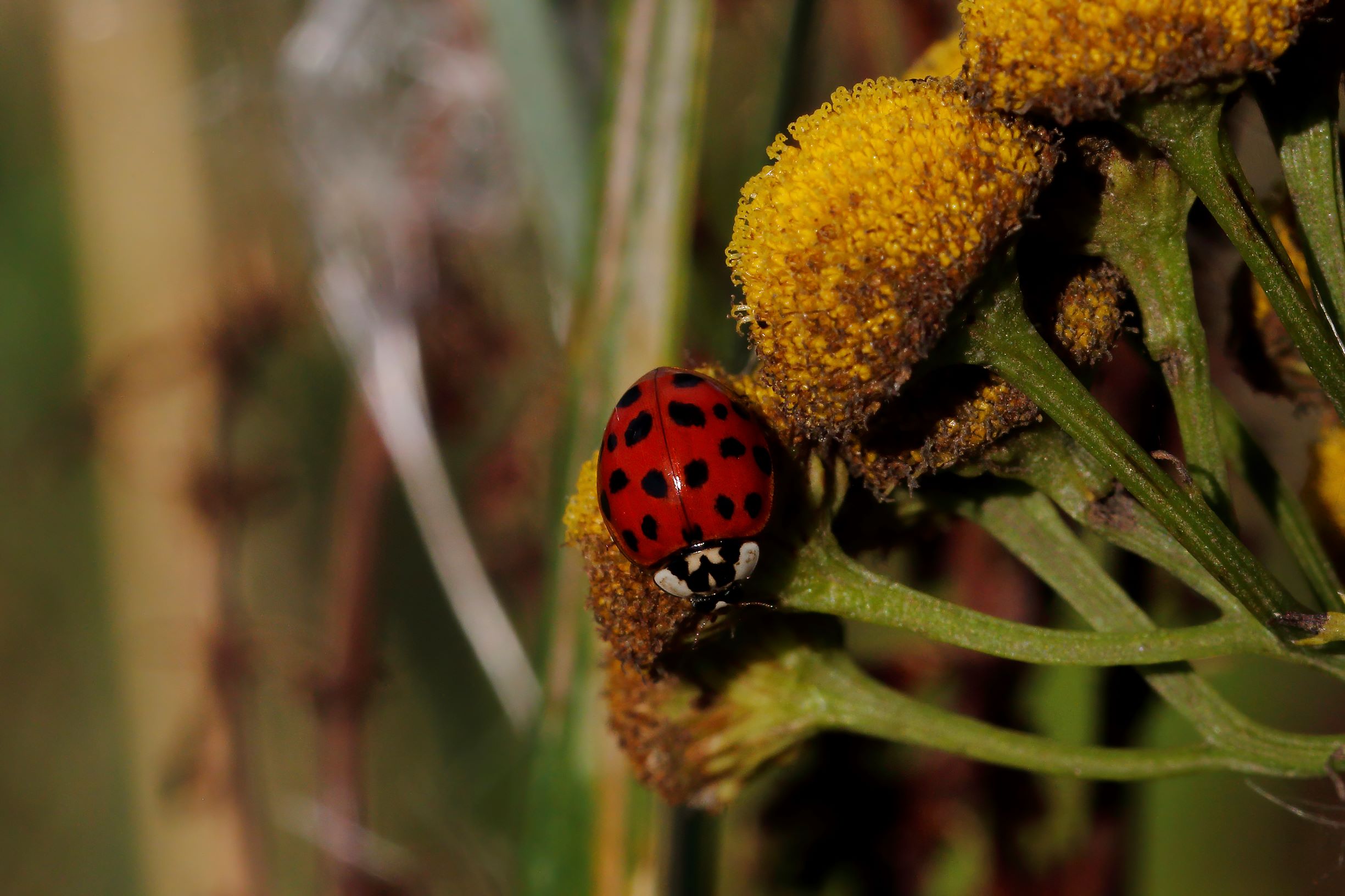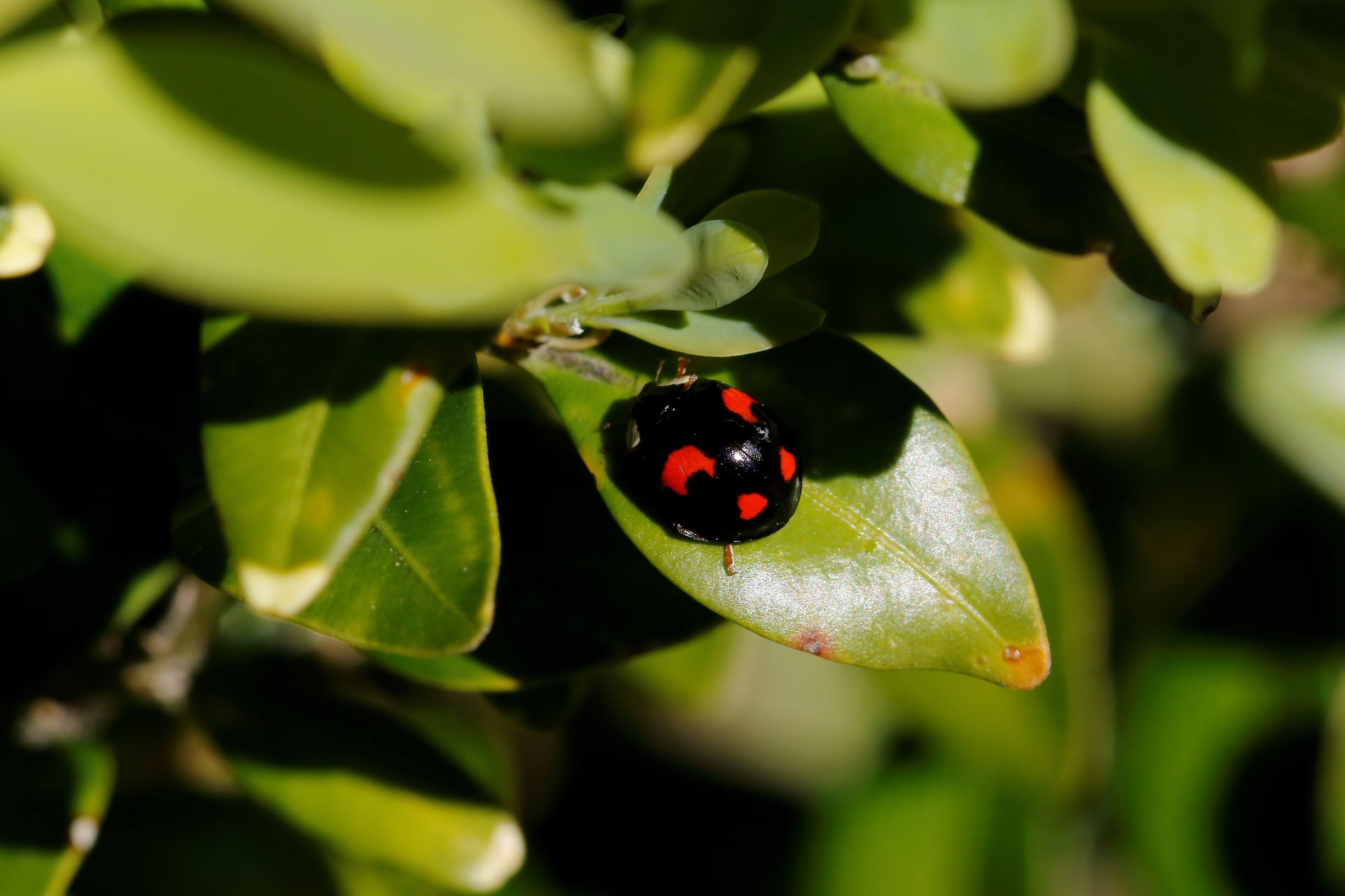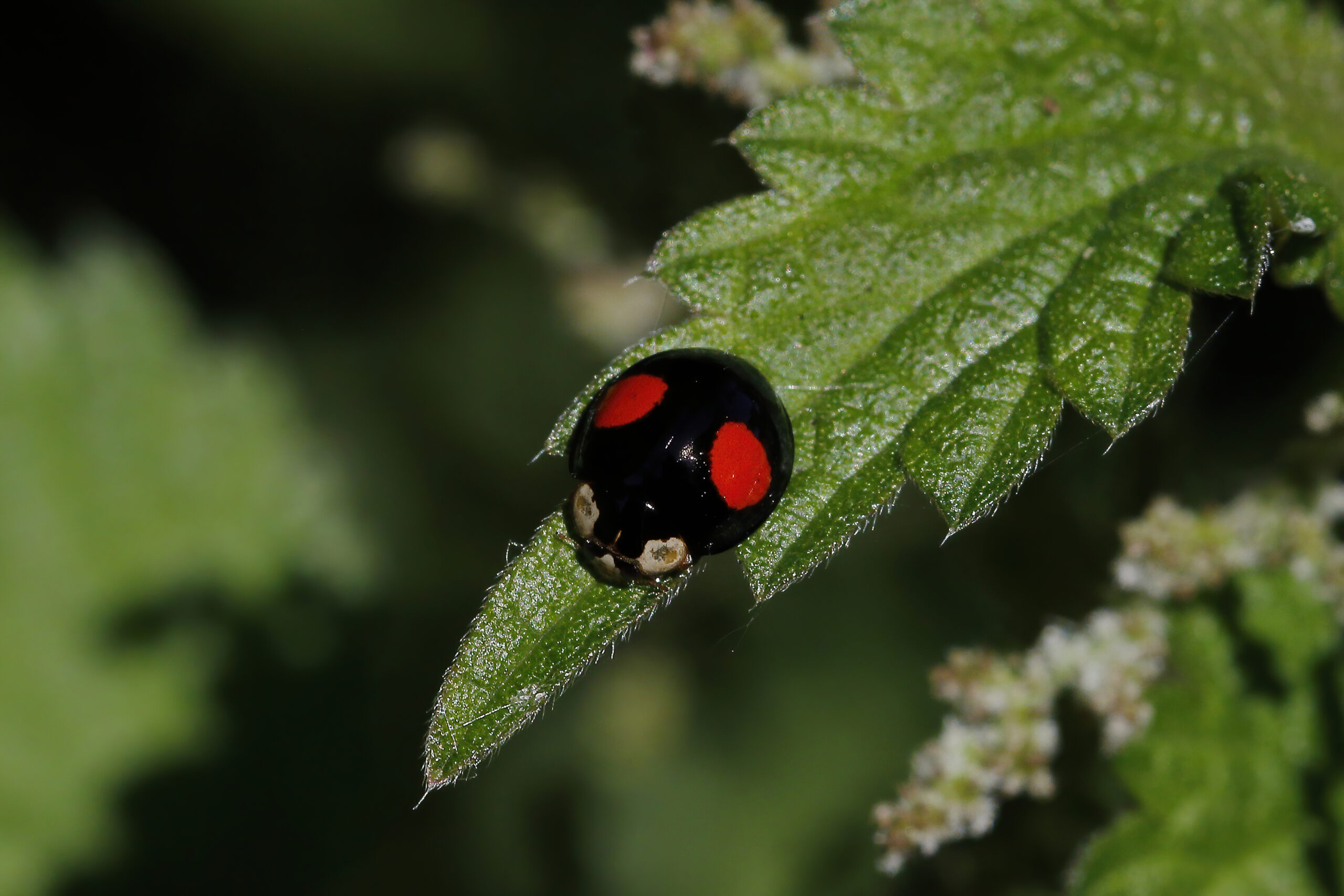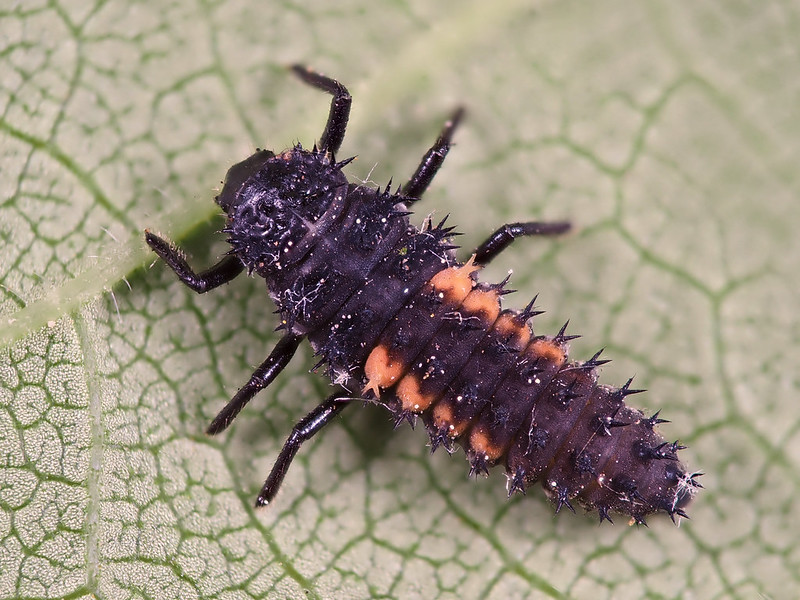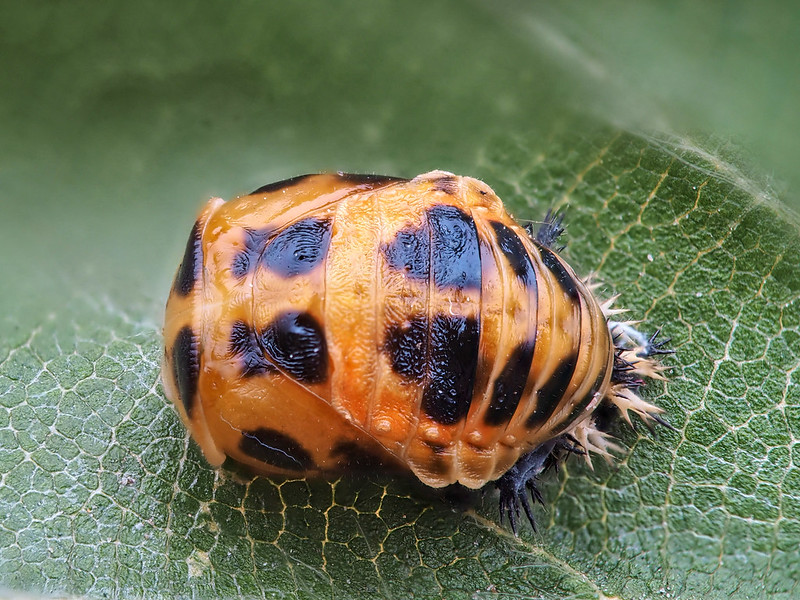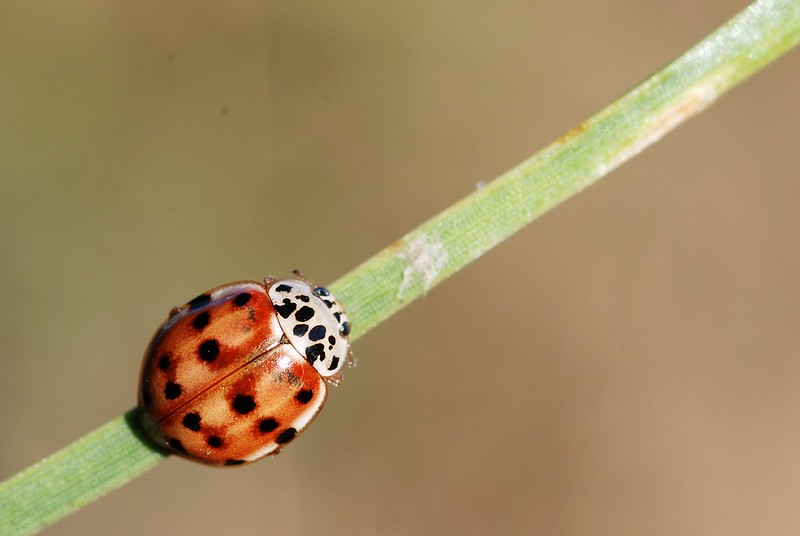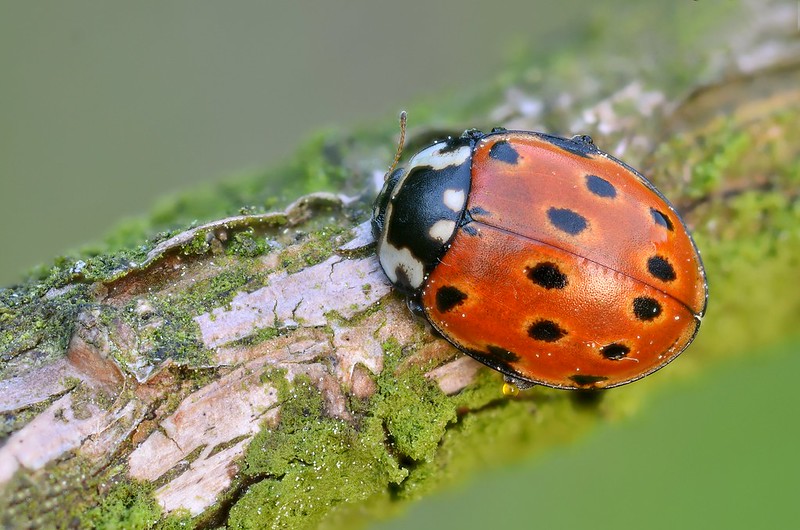The Harlequin Ladybird is a large and domed ladybird with very variable patterns. First recorded in the UK in 2003.
Fast facts
- Common name(s)
- Harlequin Ladybird
- Scientific name
- Harmonia axyridis
- When to see it
- Year round
- Diet
- Aphids and other soft-bodied insects
Description
The Harlequin Ladybird is a large and domed ladybird with very variable patterns. First recorded in the UK in 2003, this species has rapidly spread across England and Wales and was first recorded in the North East in 2010.
Identification
Adults
Adults are large and domed ladybirds at 5 – 8 mm in length. This species is very variable and has three common forms. A key feature is the large size of this ladybird in comparison to our native species. In the common succinea form, there are two black spots on each ‘shoulder’ of the wing cases. This helps to separate it from the 10-spot Ladybird. The legs are brown.
| Form | Elytra colour | Pattern |
| f. succinea | Yellow, orange or red | 0 – 21 black spots |
| f. spectabilis | Black | Four red or orange markings |
| f. conspicua | Black | Two red or orange markings |
Also see the UK Ladybird Survey’s Harlequin Ladybird identification guide to help you separate this species from other common ladybirds.
Larvae
Late stage larvae are black with thick spines. There are orange markings down each side of the abdomen.
Pupae
The pupae are orange with black square markings running down the back. Remains of the spiky larval skin are visible at the base of the pupae.
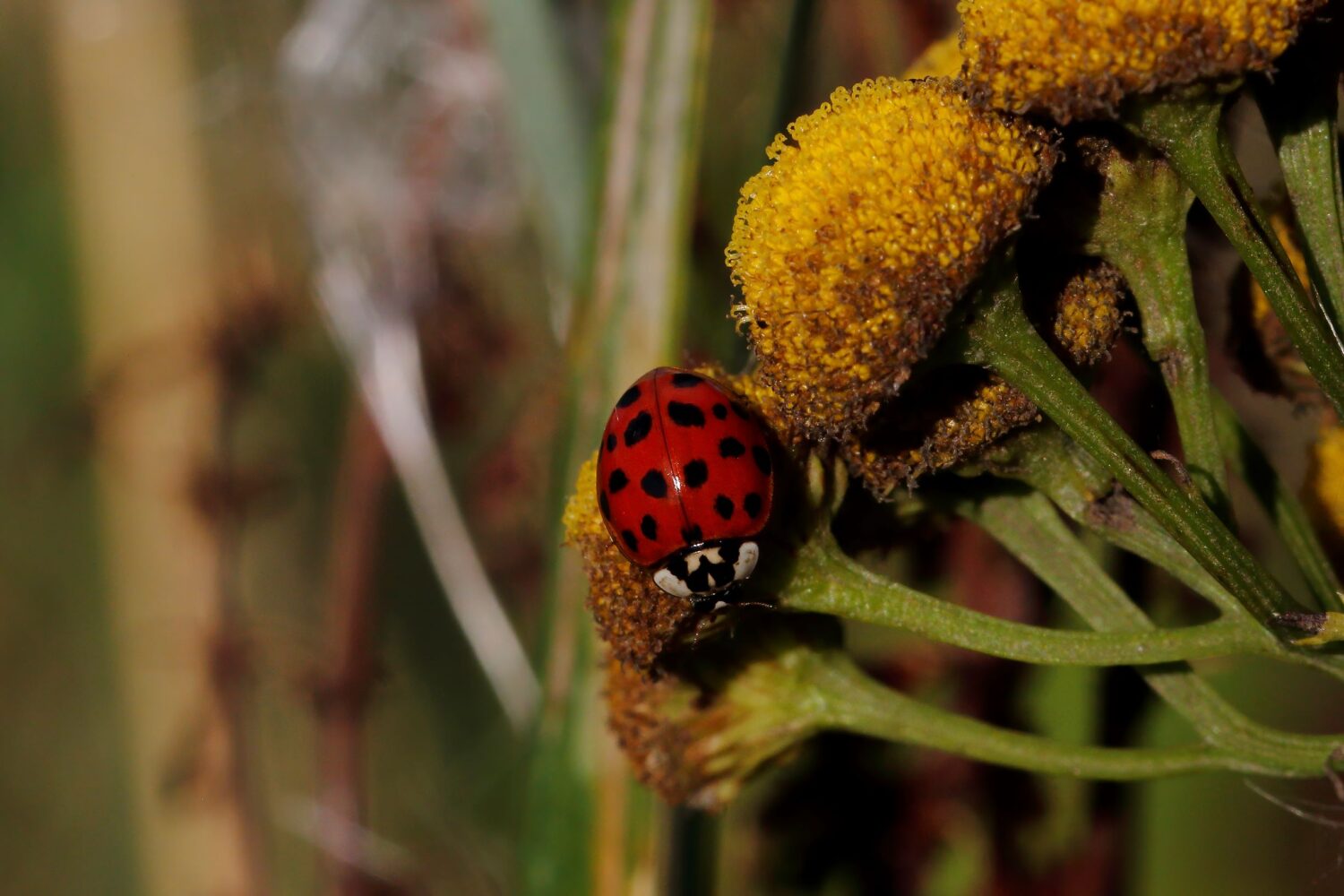
Spotted this ladybird?
Share your sighting of the Harlequin Ladybird and other North East Ladybird Spot target species to contribute to the conservation and study of our region’s ladybirds.
Similar species
Three other ladybirds are similar to the Harlequin Ladybird. The 10-spot Ladybird is smaller and is a target species of the Ladybird Spot: its species profile can be viewed here.
The 16-spotted form of the Cream-streaked Ladybird is very similar but is more salmon-pink and the spots on each side of the body are arranged as 1 – 3 – 3 – 1. It is a conifer specialist and not common in the North East.
The Eyed Ladybird is another large species with similar marking but is a conifer specialist, has black legs and can have cream rings around the spots.
Also see the UK Ladybird Survey’s Harlequin Ladybird identification guide to help you separate this species from other common ladybirds.
Ecology
A recent arrival to the UK from mainland Europe, the Harlequin Ladybird was first recorded in 2003 in the south east of England and has since spread to all parts of the UK. It was first reported in the North East in 2010. There are many records for urban areas, but relatively few for rural sites.
Adults can be found throughout the year and this species can complete several generations during the warmer months. The larvae are voracious predators and will feed on a range of insects including small caterpillars and other ladybird larvae. The adults often overwinter in large clusters in buildings, but it can be found overwintering in many sheltered urban locations
The Harlequin Ladybird is a generalist species found in a wide range of habitats. It is frequently found on deciduous trees, such as Lime or Sycamore, but can be found on a wide variety of other trees and herbaceous plants such as Nettle, thistles, Cow Parsley, Rosebay Willowherb and Fat-hen.
Did you know?
The Harlequin Ladybird has been introduced to many counties to control aphid pests.
Regional Distribution
In the North East many records come from urban areas with very few from rural locations, but this may reflect recorder effort. It is one of the most recorded ladybird species in the North East. There are very few records north of Morpeth. It is widespread across England and Wales, with a more restricted distribution in Scotland.
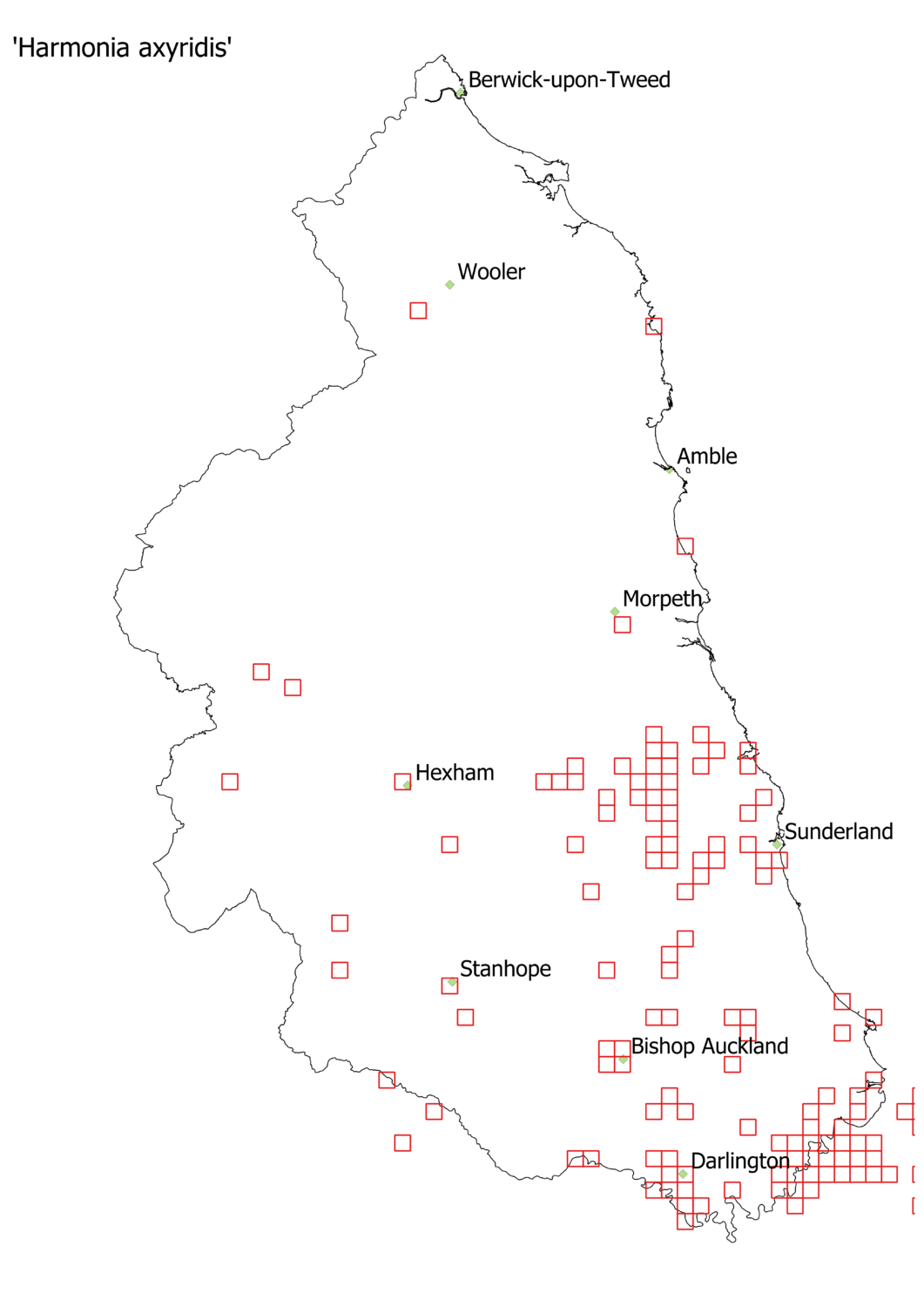
Distribution map of Harlequin Ladybird (ERIC North East data)
